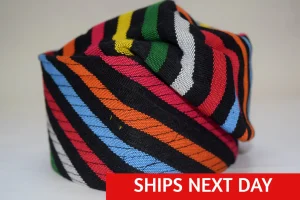Introduction
Aso Oke, a vibrant and intricate fabric woven by hand in Nigeria, has been a staple in the country’s cultural heritage for centuries. One of the most iconic and versatile pieces crafted from Aso Oke is the cap. From traditional ceremonies to modern fashion runways, Aso Oke caps have captivated the world with their elegance, sophistication, and deep cultural significance.
This article delves into the fascinating world of Aso Oke caps, exploring their history, types, production process, cultural significance, and contemporary relevance.
Types of Aso Oke Caps

Aso Oke caps come in a variety of styles, each with its own unique characteristics and cultural associations. Some of the most common types include:
- Fila: A traditional Yoruba cap, often worn by men, with a tall, conical shape. The fila is typically adorned with beads, sequins, or other embellishments.
- Agbada: A flowing, loose-fitting robe, often worn by men, with a matching cap. The agbada and cap set is a popular choice for formal occasions.
- Gele: A headwrap worn by women, often made from Aso Oke. The gele can be styled in various ways, from simple to elaborate.
- Babanriga: A loose-fitting robe, often worn by men, with a matching cap. The babanriga is popular in northern Nigeria
In recent years, designers have experimented with modern interpretations of Aso Oke caps, incorporating contemporary styles and trends while preserving the fabric’s traditional essence. This has led to the creation of unique and innovative cap designs that appeal to a wider audience
Materials and Production
Aso Oke is a handwoven fabric made from cotton or silk. The weaving process is labor-intensive and requires skilled artisans. The fabric is often dyed in vibrant colors using natural dyes derived from plants, minerals, or insects.
Once the fabric is woven, it is cut and shaped into the desired cap style. The cap may then be embellished with beads, sequins, or other decorative elements. Traditional methods of cap-making involve hand stitching and embroidery, while modern techniques may include machine sewing or laser cutting.
Styling and Cultural Significance
Aso Oke caps are not merely fashion accessories; they also hold deep cultural significance in Nigeria. The choice of cap style, color, and embellishments can convey information about the wearer’s social status, tribal affiliation, and religious beliefs.
For example, the fila is often associated with Yoruba culture, while the babanriga is more common in northern Nigeria. The color of the cap may also have symbolic meaning. White, for example, is often associated with purity and innocence, while red may symbolize strength and power.
Aso Oke Cap in Contemporary Culture
In recent years, Aso Oke caps have gained popularity beyond Nigeria’s borders. They have been featured on international fashion runways, worn by celebrities, and incorporated into modern streetwear trends. This global recognition has helped to raise awareness of Nigerian culture and heritage.
Aso Oke caps are also becoming increasingly popular as a symbol of identity and pride for Nigerians living abroad. Wearing an Aso Oke cap can be a way of connecting with one’s roots and celebrating Nigerian culture.
Aso Oke caps are more than just fashion accessories; they are timeless symbols of Nigerian heritage. Their intricate designs, vibrant colors, and deep cultural significance have made them a beloved and enduring part of Nigerian culture.
As Aso Oke caps continue to evolve and adapt to modern trends, they remain a testament to the enduring beauty and creativity of Nigerian craftsmanship.